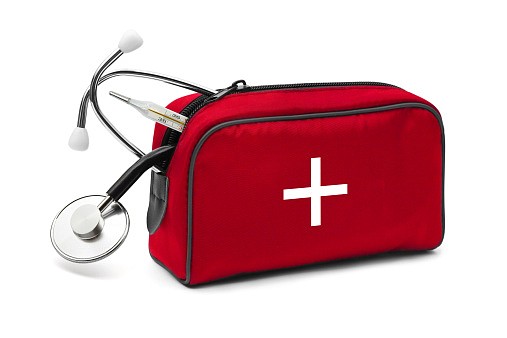Plan ahead for diabetes care during summer heat, storms and emergencies. Keep your routine and prepare your medicines and equipment for challenging conditions. Beat the heat and storms to care for your diabetes.
If you have diabetes, you know how important it is to have a care routine. Yet summer weather, with its high temperatures and extreme storms, can cause problems with that routine and make it more difficult to manage diabetes.
Diabetes makes it harder for your body to handle high heat and humidity. You may need to make changes in your medication and what you eat and drink when temperatures rise. During emergencies and natural disasters such as hurricanes or tornadoes, you may have other needs related to diabetes.
- Identify yourself as a person with diabetes so you can get appropriate care.
- If you're a family member, caregiver, or health care provider for someone with diabetes, please share this information with them.
High Heat
Hot weather – temperatures of 80°F (about 27°C) or above, especially with high humidity – can affect medication, testing supplies and your health. The heat index, which measures how hot it really feels by combining temperature and humidity readings, advises caution starting at 80°F with 40% humidity. Extreme heat is especially dangerous to people aged 65 and older, children younger than 4, people with mental illnesses, and people with chronic diseases such as diabetes.
- Drink plenty of fluids, especially water, to avoid dehydration. Don't wait until you get thirsty: it's a sign you're already dehydrated. Avoid sugar-sweetened drinks such as sweet tea and sodas.
- If your doctor has limited how much liquid you can drink, ask what to do during times of high heat to stay hydrated.
- Know the signs of heat-related illness and how to respond to symptoms of heat exhaustion and heat stroke.
- Heat stroke can cause death or permanent disability if emergency treatment isn't provided.
- Wear sunscreen and use a lip balm with sunscreen.
- Wear loose-fitting, lightweight, and light-colored clothing.
- Check medication package inserts to learn when high temperatures can affect them. Carry medications with you if you'll need to take them while you're away from home, and protect them from the heat.
- If you're traveling with insulin, don't store it in direct sunlight or in a hot car. Keep it in a cooler, but don't place it directly on ice or on a gel pack.
- Check glucose meter and test strip packages for information on use during times of high heat and humidity. Don't leave them in a hot car, by a pool, or on the beach.
- Heat can damage insulin pumps and other equipment. Don't leave the disconnected pump or supplies in the direct sun or in a hot car.
- Get physical activity in air-conditioned areas, or exercise outside early or late in the day, during cooler temperatures.
- Use your air conditioner or go to air-conditioned buildings in your community to stay cool.
What to Do During Emergencies
People with diabetes face extra challenges during emergencies and natural disasters such as hurricanes, earthquakes, and tornadoes. If you're evacuating -- leaving your home to get away from a threat -- or staying in an emergency shelter, let others know that you have diabetes so that you can take care of your health. If you have other health problems, such as chronic kidney disease or heart disease, make sure you let others know about those, too.





